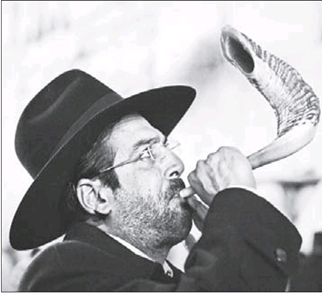Day of Atonement

Yom Kippur marks the holiest day of the Jewish year
Yom Kippur is the holiest day of the Jewish year. It ends a 10 day period during which Jews believe God has been deciding their fate for coming year.
During this time, Jews have been reflecting upon and atoning for their sins and misdeeds of the past year, hoping to obtain Gods forgiveness. It is on Yom Kippur that Jews believe God passes his final judgment, determining whether they will be rewarded with a good year or punished with a bad year during the next year.
On Yom Kippur, God seals their fate for coming year. The 10 day period of atonement, also known as the Days of Awe, began with Rosh Hashanah, the Jewish New Year. During this time, god has opened his books ledgers in which he has inscribed all the deeds of humanity. During the Days of Awe, as Jews have examined their sins, sought forgiveness and reflected upon ways to improve themselves in the coming year, God has been deciding their sentence.
Up until Yom Kippur, Jews had the chance to earn Gods forgiveness and influence his judgment of them, but on Yom Kippur, God makes his final judgment and seals his books.
Yom Kippur lasts for 25 hours, beginning at sundown the night before Yom Kippur and ending an hour after sun down the day of Yom Kippur. Jews observe a strict fast during this time, refraining from eating or drinking. They are prohibited from working and some also refrain from washing, bathing, or using perfume or locations. Some Jews will also refrain from wearing leather shoes. The eve on Yom Kippur, as well as most of the following day, is spent in synagogue, deep in prayer.
In the daylight hours before the sun sets on the eve of Yom Kippur, Jews prepare for the long fast and solemn day ahead with a festive meal. Once the sun sets, the period of fasting and observance begins.
The Yom Kippur service contains many special prayers, including a time when people publicly confess their sins. Many observant men where a white robe called a kittle. At the end of Yom Kippur service, in the synagogue, the shofar, a trumpet made from a rams horn, is sounded. The shofar was also sounded during Rosh Hashanah observance, and is very meaningful to Jews.
This time, the sound of the horn signals celebration. Jews now consider themselves to have been absolved of their sins. Yom Kippur ends an hour after sun down. To celebrate the end of the fast, many Jews enjoy a feast of bagels, cheese, tuna fish, egg salad and sweet cakes.
Picture above: Jewish man blows a shofar (rams horn) at the end of the Yom Kippur service.

